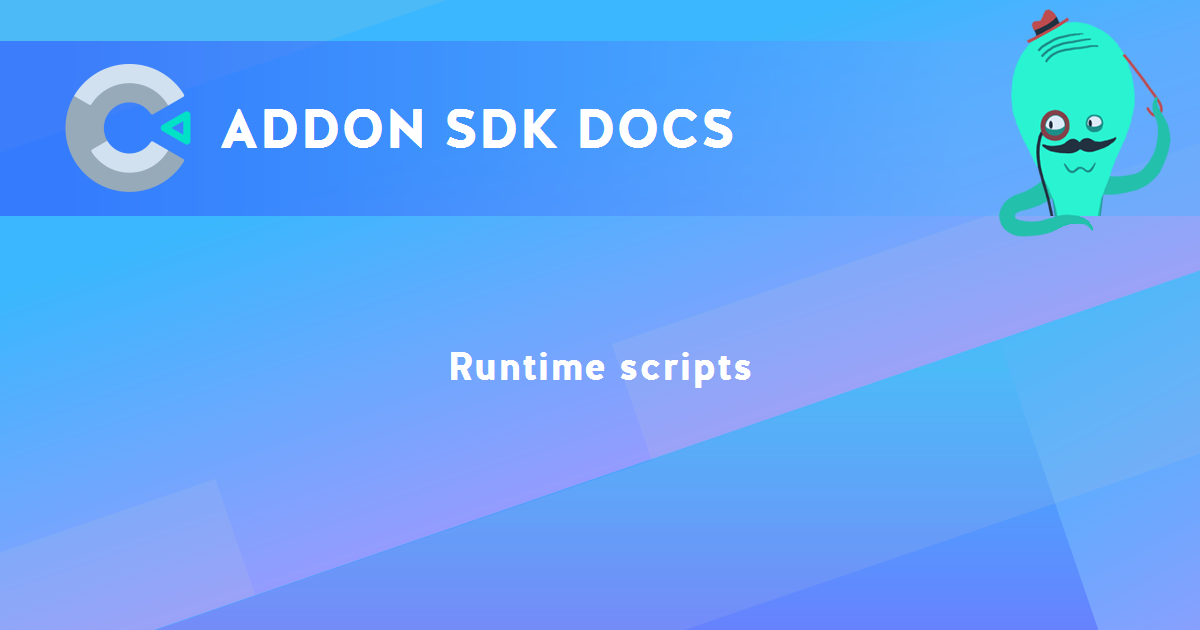Runtime scripts
Plugin and behavior addons have separate scripts that run in the context of the runtime (the Construct game engine) rather than the editor.
The key difference between the Addon SDK v1 and Addon SDK v2 is how runtime scripts are written. In the Addon SDK v1, runtime scripts had access to a separately documented and maintained set of APIs. In the Addon SDK v2, runtime scripts are based on the same APIs as used by Construct's scripting feature, unifying the addon APIs with scripting APIs. Therefore all the APIs in the scripting reference section of Construct's manual are also accessible to addons in the SDK v2.
For more details on runtime scripts, refer to the sub-sections on each addon SDK version.
Porting to Addon SDK v2
For more information on how to port addons from SDK v1 to SDK v2, see the guide Porting to Addon SDK v2.
Addon SDK Manual
Construct.net
2018-04-26
2024-06-11

You are here:
Search this manual:
This manual entry was last updated on 11 Jun, 2024 at 16:56